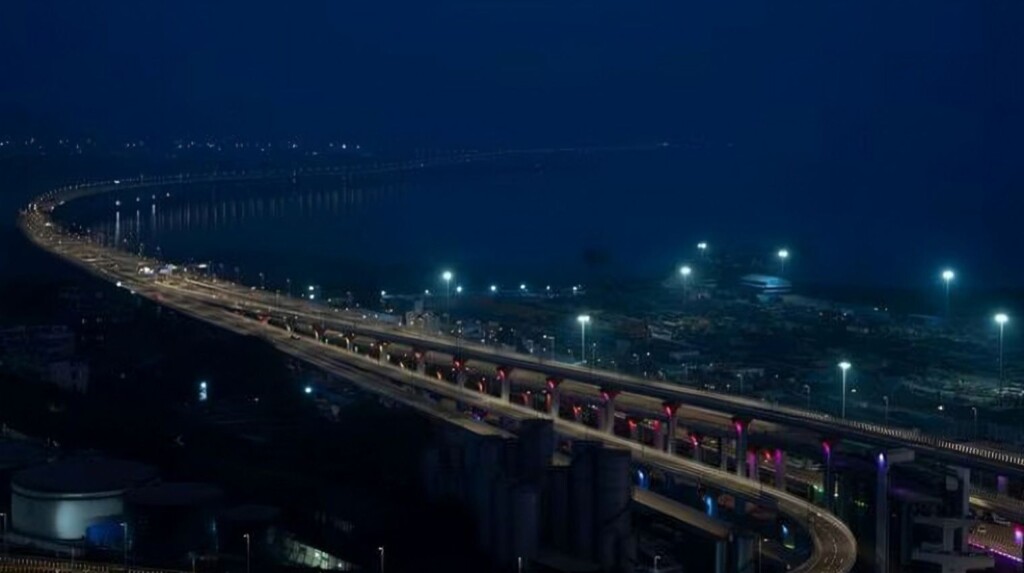On January 12, Prime Minister Modi is scheduled to inaugurate India’s longest sea bridge, while the Mumbai Police has issued a set of regulations for traveling across it.
The Maharashtra chief minister’s Office has announced that the Mumbai Trans Harbour Link (MTHL), also known as the Atal Setu, will be inaugurated by Prime Minister Narendra Modi on January 12. This remarkable sea bridge, named after former PM Atal Bihari Vajpayee, stretches from Sewri in Mumbai to Nhava Sheva in Uran taluka, Raigad district. The construction of this extensive project has incurred a cost of ₹18,000 crore, as reported by PTI.
However, the Mumbai Police on Wednesday issued a few rules for travelling on the MTHL. The maximum speed limit for four-wheelers on the Mumbai Trans Harbour Link (MTHL) will be 100 kmph, while motorbikes, autorickshaws and tractors won’t be allowed on the sea bridge.
Officials said that vehicles like cars, taxis, light motor vehicles, minibuses and two-axle buses will have a speed limit of 100 kilometres per hour. Further, the speed limit on the ascent and descent from the bridge will be limited to 40 kmph.
Nevertheless, the Mumbai Police has recently released a set of regulations pertaining to travel on the MTHL. Four-wheelers will be subject to a maximum speed limit of 100 kmph on the Mumbai Trans Harbour Link, whereas motorbikes, autorickshaws, and tractors will not be permitted on the sea bridge.
According to officials, cars, taxis, light motor vehicles, minibuses, and two-axle buses will be required to adhere to a speed limit of 100 kilometres per hour. Additionally, the speed limit for vehicles ascending and descending from the bridge will be restricted to 40 kmph.
To ensure public safety and minimize potential hazards, a speed limit has been implemented on India’s longest sea bridge, as explained by a Mumbai Police official to PTI. This measure aims to address concerns related to danger, obstructions, and inconvenience for the public. In order to maintain smooth traffic flow, certain vehicles such as motorcycles, mopeds, auto rickshaws, tractors, and slow-moving vehicles will not be permitted on the bridge.
Additionally, multi-axle heavy vehicles, trucks, and buses heading towards Mumbai will not be granted access to the Eastern Freeway. Instead, they are required to utilize the Mumbai Port-Sewri Exit (Exit 1C) and proceed via the MBPT Road near ‘Gadi Adda’ for their onward journey.
The Mumbai Trans Harbour Link, known as the Atal Setu, is the largest sea bridge ever built in India. Spanning a length of 22 km, the Atal Setu consists of six lanes and connects Sewri in the island city to Nhava-Sheva on the mainland.
During its construction, a staggering amount of materials were utilized, including 177,903 metric tonnes of steel and 504,253 metric tonnes of cement. Currently, the bridge provides access to Navi Mumbai through two points: the Airoli-Mulund connector and the Vashi connector.
With the completion of this bridge, travel between Mumbai and Navi Mumbai will be significantly streamlined. Motorists will now be able to cover the distance in just 20 minutes, a remarkable improvement compared to the previous two-hour journey.
